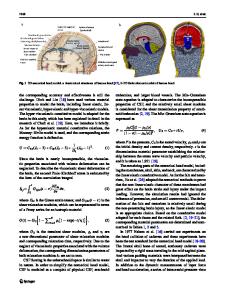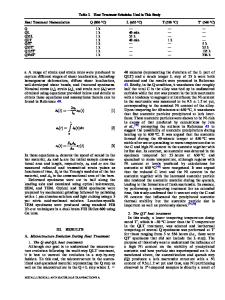Shear band widening mechanism in Ti–6Al–4V under high strain rate deformation
- PDF / 1,267,432 Bytes
- 12 Pages / 584.957 x 782.986 pts Page_size
- 8 Downloads / 814 Views
FOCUS ISSUE
INTERACTIONS OF SHEAR TRANSFORMATION BANDS
Shear band widening mechanism in Ti–6Al–4V under high strain rate deformation Anuj Bisht1,a), Subhash Kumar1, Ka Ho Pang2, Rongxin Zhou2, Anish Roy2, Vadim V. Silberschmidt2, Satyam Suwas1 1
Department of Materials Engineering, Indian Institute of Science, Bangalore 560012, India Wolfson School of Mechanical, Electrical and Manufacturing Engineering, Loughborough University, Loughborough LE11 3TU, U.K. a) Address all correspondence to this author. e-mail: [email protected] 2
Received: 1 December 2019; accepted: 6 February 2020
In this study, mechanical properties and microstructural investigation of Ti64 at high strain rate are studied using a split-Hopkinson pressure bar method under compression for temperatures up to 800 °C. Flow softening in the mechanical response of material to such loading conditions hints at instability in compression, which increases with an increase in temperature. Microstructural characterization of the deformed material is characterized using the electron-backscattered diffraction technique. It reveals the presence of instabilities in Ti64 in the form of a fine network of shear bands. The shear band width grows with an increase in temperature along with the area fraction of shear band in the material, displaying its improved capacity to contain microstructural instabilities at higher temperature. After a detailed microstructural investigation, a mechanism for shear band widening is proposed. Based on this mechanism, a path generating nuclei within shear bands is discussed.
Introduction Titanium and its alloys are an important class of materials for applications in critical aerospace component [1]. In particular, Ti–6Al–4V (Ti64) is a popular alloy with a big market share. Because of its relevance for industrial applications, extensive studies of mechanical behavior of Ti64 are available in the literature. Its microstructure typically displays Widmanstätten structure consisting of HCP a 1 BCC b colonies, with the beta titanium phase present in traces at the colony boundaries [2]. It is well known that a deformation microstructure of Ti64 and other Ti alloys below the recrystallization temperature has distinguishable regions of localized strain, with prominent and widespread networks of shear bands [3, 4, 5]. Nucleation of instabilities such as adiabatic shear bands in the microstructure induces localized softening and is a precursor of material’s failure by promoting formation and coalescence of voids resulting in crack initiation [6, 7, 8]. Thus, a significant research was done with a focus to study the deformation microstructure, the nature of instabilities, and methods to prevent their formation. Flow instabilities in Ti64 were classified as “geometric” [3] instabilities as they were found to depend on the stress state.
ª Materials Research Society 2020
The microstructure within adiabatic shear bands in titanium is characterized by fine equiaxed grains formed at a high temperature via rotational dynamic recrystallization und
Data Loading...











